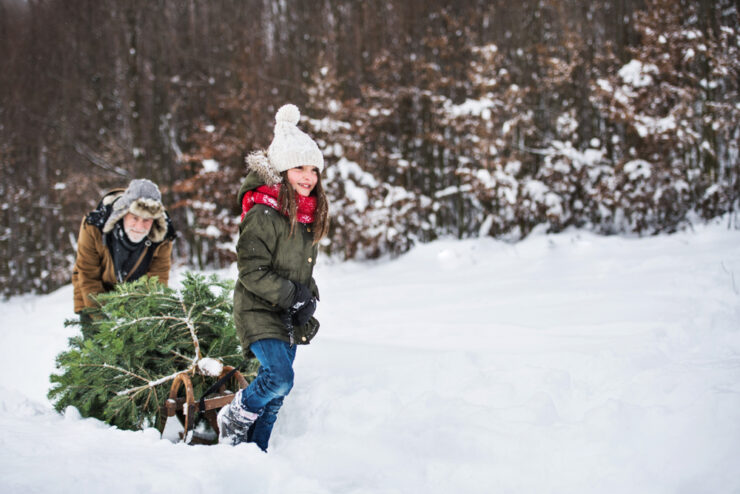Where and How to Get a Christmas Tree Cutting Permit at Lake Tahoe

It’s that time of the year when the Sun Bear Realty and Property Management team in Incline Village is getting ready for our busy holiday season.
Among our “to-dos” list is one of our favorite traditions: finding and bringing home a tree to decorate for our Christmas celebrations. To help you do the same, we have posted some important “before you go” advice below – offered from the Recreation.gov website.
If you have always wanted to get out under the clear skies of the Sierra to claim your tree, now is the time to do so while the weather is in your favor. Lake Tahoe Basin Management Unit Christmas Tree permits will only be sold in person at the Supervisor's Office at 35 College Dr. South Lake Tahoe, California for 2023.
The following advice was provided by Recreation.gov. Visit their site often for all you need to know about how to safely enjoy the great outdoors.
Where to Cut Your Tree
- Your permit allows you to cut Christmas trees.
- Make sure you cut your trees on public lands. Follow all motorized road and trail restrictions on the Motor Vehicle Use Map.
- Do not cut on private land, wilderness areas, designated recreation sites, previously thinned areas, or existing tree plantations.
- Do not cut in active timber sales or areas that have been planted with new trees.
- Do not cut trees visible from major roads, within 150 feet of streams and creeks, or in other well-used areas.
- Please post your permit on your dash.
Selecting Your Tree
- Each forest has limitations on the size of the tree you can cut and the species of trees that are permitted. See below to help you measure and choose a tree that meets your permit’s guidelines.
- Tree Height: 12 feet maximum
- Stump height: 6 inches maximum
- Stump diameter: 6 inches maximum
- Take the whole tree. Cutting the tree top off is prohibited.
- Remove snow from around the stump to accurately measure the stump and tree height if snow is on the ground.
- Cut the leftover branches from the stump and scatter them.
How to Plan Your Trip
- Before you leave home, be sure to measure the space where you plan to place the tree in your home (height and width) and measure the area in your vehicle where you will be transporting the tree.
- Cell service may be spotty or unavailable. Be sure someone knows where you are and when to expect you back.
- Check the latest weather conditions, forest warnings, and road closures before you leave on your trip.
- Bring a map with you. Please don’t rely on GPS because it may not be up-to-date with forest service roads.
- Dress warmly and take extra dry clothes. Expect winter weather, including cold temperatures, snow, and wind.
- Roads may not be plowed. Carry tire chains, shovel(s), and a tow chain. Be sure your vehicle has a full tank of gas. Bring a spare key and give it to someone else in your party. Don’t get locked out of your car!
- Park in areas so that traffic can get by safely and do not block gates.
- Bring plenty of food, water, and an overnight survival kit in case you become stranded.
- Start your day early. Be sure to find your tree and leave the woods before dark.
Helpful Cutting Tips
- Carry your tree carefully out of the woods. Dragging the tree will rub off needles and bark.
- If the tree is too big to transport inside your vehicle, wrap it in canvas to prevent wind damage.
- Once home, cut the bottom of the trunk off and place the freshly cut trunk in a bucket of water. Replenish water.
- If storing your tree outside for a few days before moving inside, keep it in an area protected from the wind.
- Tools you might want to consider bringing with you include a measuring tape to ensure you select a tree that fits in your home; a handsaw to cut your tree; gloves to protect your hands; boots to protect your feet; a tarp to sit on and/or to move your tree once it’s cut; and rope or straps to secure your tree to your vehicle.

 Market Stats
Market Stats Listing Watch
Listing Watch My Home Valuation
My Home Valuation